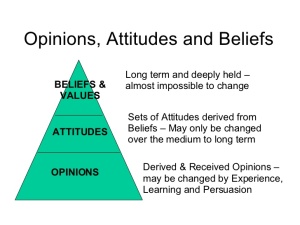I like the idea of how the authors White and Cornu (2008) first established in their blog post, the basis behind how they classified their student’s digital behaviours according to ‘visitors’ and ‘residents’. I would like to support their notion that how people use the web (in this case taking their students as samples of the general population of present day web users) is largely based on their approach and motivation behind it more than just their age.
We are all familiar that, in the interconnected realms of marketing and psychology, segmenting people according to Behaviour and Socio-Psychological factors (eg. Motivation) are often far more effective than simply segmenting them according to their Geographic and Demographic (eg. Age) factors. (Capon & Hulbert, 2007). In this case, simply trying to understand peoples’ digital behaviours by their age is not enough.
We also know that what drives a person’s behavior is based on a set of deeply entrenched values as famously explained by Homer and Kahle’s value-attitude-behaviour hierarchy (1988).

In the same way, if we want to truly understand what drives a person’s digital behaviour, we have to really uncover and understand his or her values and belief systems. Understanding people’s values can help organisations or universities to package their product, service or tools in ways that relate to their customer’s value rather than try to come up with endless amounts of variations in order to meet different customer behaviours.
There are many reasons that can explain a person’s motivation towards the web. Some of us, like myself, who may not be so comfortable expressing ourselves in front of people may find it doubly difficult to go online and start expressing ourselves there, much less maintain an online identity, when we prefer to keep our lives private. A lot of this could be due to cultural context or even down to a person’s personality.
Having a framework to classify current day internet users along the spectrum of digital ‘visitors’ and ‘residents’ is certainly more useful and comprehensive than the categories of digital ‘natives’ and ‘immigrants’ (White and Cornu, 2008). However I would like to suggest that if we want to truly identify the best platforms and ways to engage current day internet users, it may be necessary to conduct a more in-depth study to examine the relationship between peoples’ values and the way they use the web.
References
Capon, N,. & Hulbert, J. (2007). Managing marketing in the 21st century. Bronxville, N.Y.: Wessex Inc.
Image.slidesharecdn.com, (2014). [online] Available at: http://image.slidesharecdn.com/buyerbehaviour-1207827345126981-8/95/buyer-behaviour-4-728.jpg?cb=1207820152 [Accessed 27 Nov. 2014].
Homer P.M. & Kahle L.R. (1988) A structural equation test of the value-attitude-behavior hierarchy, Journal of Personality and Social Psychology, 54 (1988), pp. 638–646
White, D. & Cornu, A. L. (2008). Not ‘Natives’ & ‘Immigrants’ but ‘Visitors’ & ‘Residents’. TALL blog, The University of Oxford.

Hi Simon, thank you for giving me some insights on the Homer and Kahle’s value-attitude-behaviour hierarchy. Do you believe that there could be people who are both visitors and residents at the same time? Based on your blogpost, it is true that understanding people’s values and beliefs will help them better package their products. Other than the different values and beliefs that people have, I think one of the keys that underlined the whole phenomenon behind visitors and residents are the sources of motivation on engagement with the web. For instance, what makes people use a certain technology while engaging with the information environment (a)? Why do people engage a lot more on Facebook than other social networks? Here is a little research found on a study that uses White and LeCornu’s model of visitors and residents to contextualise participants’ engagement with the digital world (a). What are your thoughts on this then?
References
a. Visitors and residents: what motivates engagement with the digital information environment?. 2014. Visitors and residents: what motivates engagement with the digital information environment?. [ONLINE] Available at: http://www.informationr.net/ir/18-1/paper556.html#.VHgKbtKUc1I. [Accessed 28 November 2014].
LikeLike
Hey Simon, bringing up Homer and Kahle’s value-attitude-behaviour hierarchy got me thinking if we as future marketers are somehow able to alter the attitudes and opinions of our potential customers. That could in return, influence whether they choose to engage in the content, product and services as a “Visitor” or “Resident”.
LikeLike
Hello Wen Hui. Thank you for your thoughts.
Yes I do believe that people can be both residents and visitors at the same time. In fact it was Sara (http://saradanlee.wordpress.com/2014/11/27/digital-visitor-vs-digital-resident/) who gave me that idea. @saradaniellelee
Also, thank you for sharing the web link. Convenience is definitely one of the main motivations. Based on the article, much of what most of us use the web for seems to be predominantly geared towards productivity purposes more so than living “online lives”. I think some of us also do strike a good balance between finding our information of google, and looking up more credible sources for other things.
For instance, while I may engage google to find out the location of and directions to a certain place, I would still engage my parents for their personal experience regarding a certain place they may have visited (eg. is it hard to find carpark spaces, what are the rates, etc).
Thanks for sharing.
LikeLike
Smcka-dab what I was looking for-ty!
LikeLike